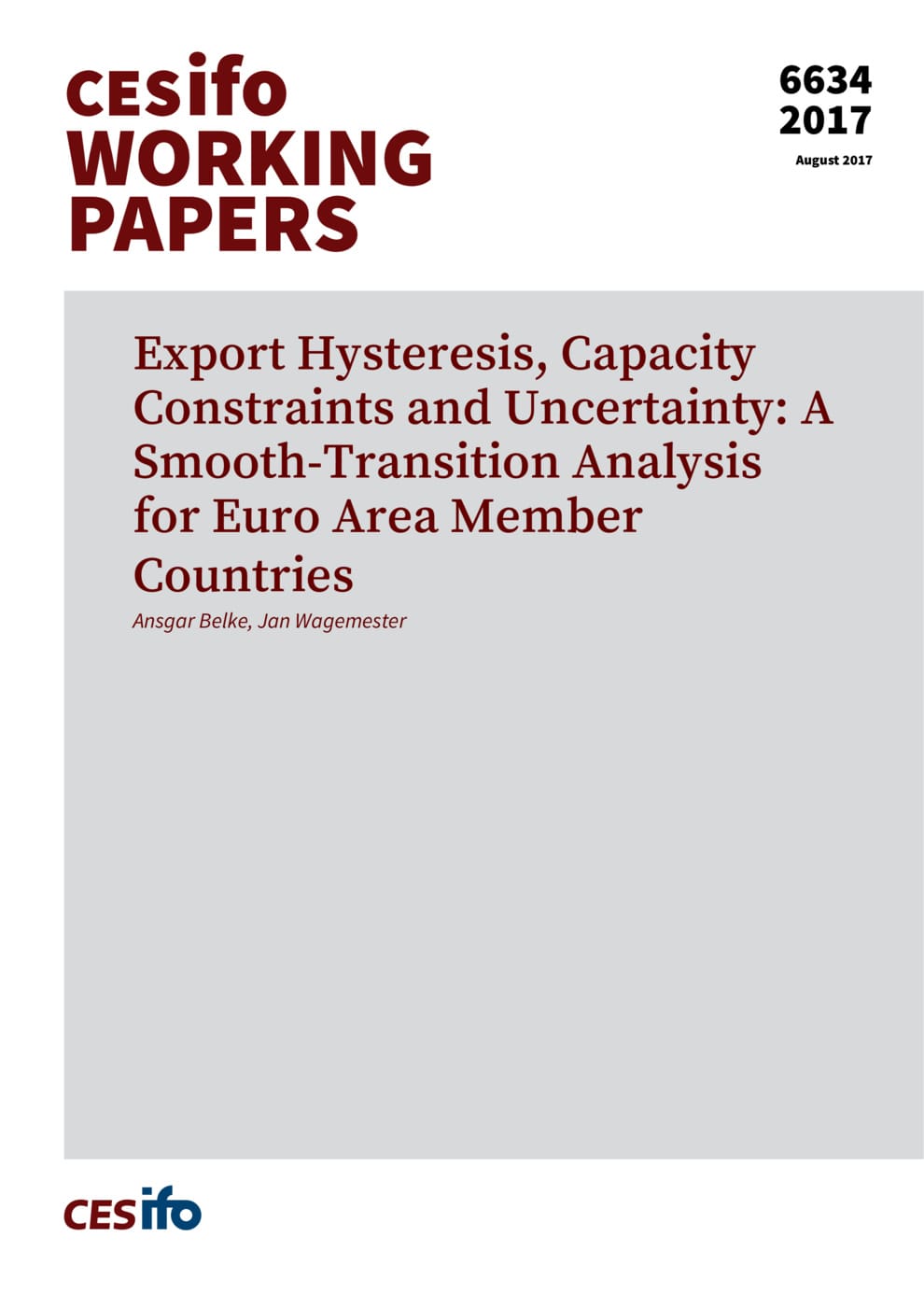Export Hysteresis, Capacity Constraints and Uncertainty: A Smooth-Transition Analysis for Euro Area Member Countries
CESifo, Munich, 2017
CESifo Working Paper No. 6634

We argue that, under certain conditions described by a sunk cost hysteresis model, firms consider exports as a substitute for domestic demand. This is valid also on the macroeconomic level where the switch from the domestic market to the export market and vice versa takes place in a smooth manner. Areas of weak reaction of exports to changes in domestic demand are widened by uncertainty. Our econometric model for six euro area countries suggests domestic demand and capacity constraints as additional variables for export equations. We apply the exponential and logistic variant of a smooth transition regression model and find that domestic demand developments and uncertainty are relevant for short-run export dynamics particularly during more extreme stages of the business cycle. A substitutive relationship between domestic and foreign sales can most clearly be found for France, Greece and Ireland (ESTR model) and France, Portugal and Italy (LSTAR model), providing evidence of the importance of sunk costs and hysteresis in international trade in these EMU member countries. What is more, our empirical results are robust to the inclusion of a variable measuring European policy uncertainty. In some cases (Italy, Greece and Portugal) the results underscore the empirical validity of the export hysteresis under uncertainty model.
Trade Policy
Fiscal Policy, Macroeconomics and Growth